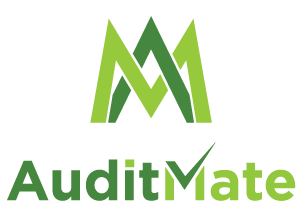Cost-Benefit Analysis of In-house Vs. Outsourced Elevator Maintenance: Adding Key Data
As you stand in your building, staring at the silver doors of the elevator, you understand that it’s more than just a mode of transportation within your building – it’s a complex piece of machinery. It’s your responsibility to keep it running smoothly. The question gnawing at your mind is this: do you handle the elevator maintenance with your own in-house team or do you call in the experts and outsource the task? This isn’t a decision you can simply make by flipping a coin. It’s a critical decision that could profoundly impact your business.
In-house Maintenance
In-house elevator maintenance involves hiring and maintaining a team of professionals within your organization. Benefits are numerous. Notably, it allows for potentially quicker response times; the Elevator Escalator Safety Foundation suggests that an efficient maintenance program should aim for an average response time of under two hours. Having your team already on-site and familiar with the building’s elevators can facilitate this.
However, there are costs tied to in-house maintenance. According to the National Elevator Industry, elevator maintenance costs typically account for 5-10% of a building’s annual operating budget. Costs encompass hiring and training, salary and benefits, purchasing and updating necessary tools and equipment, and the requirement for continuous professional development due to the changing landscape of elevator technology.
Outsourced Maintenance
Outsourced elevator maintenance involves contracting a third-party company. This gives you access to a team of experts who are specialized and updated with the latest technology and safety regulations, reducing the need for in-house training and continuous professional development. Outsourcing allows you to pay only for the service you need, potentially reducing labor costs.
There are downsides to outsourcing, however. You may face slower response times, and there might be inconsistencies in the service quality. It could also prove more expensive if you have a significant number of elevators.
Cost-Benefit Analysis
The choice between in-house and outsourced elevator maintenance demands a comprehensive cost-benefit analysis. Direct costs like labor, parts, and equipment, along with indirect costs such as downtime (with elevators experiencing an estimated 190 hours of downtime per year, according to Elevator World magazine) and potential legal costs from rare but possible accidents, need to be considered.
When factoring in the costs for in-house maintenance, don’t overlook the potential for increased equipment lifespan; the National Association of Elevator Contractors has found that well-maintained elevators can last an average of 25 years or more.
AuditMate’s Role
Regardless of whether you choose in-house or outsourced elevator maintenance, managing and tracking tasks, auditing invoices, and ensuring contractual compliance can be complex. This is where AuditMate steps in.
AuditMate, a SaaS elevator audit software, simplifies vendor management by providing data-driven auditing products. It helps monitor vendor adherence to the maintenance contract, audit invoices for correctness, ensuring you only pay for the services received.
AuditMate can also play a vital role in safety considerations and customer satisfaction. By ensuring adherence to maintenance contracts and schedules, AuditMate contributes to minimizing the risk of accidents, which the Consumer Product Safety Commission (CPSC) reports are already rare, with an estimated 27 fatalities per year in the US.
Moreover, minimizing downtime can significantly enhance customer satisfaction. Persistent issues or delays in service response can impact your customer’s experience negatively. AuditMate assists in avoiding such instances, helping maintain your elevator’s uptime and, as a result, your customer satisfaction.
Over the long-term, AuditMate provides you with the data and insights needed to make informed decisions about repair and upgrade proposals. This allows you to effectively manage your maintenance costs, potentially extending the lifespan of your equipment, and ensuring your investment offers maximum returns.
FAQs
What factors should I consider when deciding between in-house and outsourced elevator maintenance?
- Consider factors such as the direct and indirect costs, the quality of service, response times, the number of elevators in your building, and the skillset and training of your in-house team. Safety considerations, customer satisfaction, and long-term equipment lifespan should also be taken into account.
How can AuditMate assist in my decision-making process between in-house and outsourced elevator maintenance?
- AuditMate simplifies vendor management by providing data-driven auditing products. This software helps you monitor your vendor’s adherence to the maintenance contract, audit invoices for correctness, and provides you with data and insights needed to make informed decisions about repair and upgrade proposals.
What is the typical cost of elevator maintenance?
- According to the National Elevator Industry, elevator maintenance costs typically account for 5-10% of a building’s annual operating budget.
What is the average downtime for an elevator?
- On average, elevators experience an estimated 190 hours of downtime per year, as reported by Elevator World magazine.
How long can a well-maintained elevator last?
- A report by the National Association of Elevator Contractors indicates that well-maintained elevators can last an average of 25 years or more.
How safe are elevators?
- Elevator accidents are rare. According to a study published by the Consumer Product Safety Commission (CPSC), there are an estimated 27 elevator-related fatalities per year in the United States.
What is the suggested response time for elevator service calls?
- The Elevator Escalator Safety Foundation suggests that an efficient elevator maintenance program should aim for an average response time of under two hours for service calls.
Can AuditMate enhance customer satisfaction and safety?
- Yes. By ensuring adherence to maintenance contracts and schedules, AuditMate contributes to minimizing the risk of accidents and maximizing uptime. This can enhance customer satisfaction and safety.

